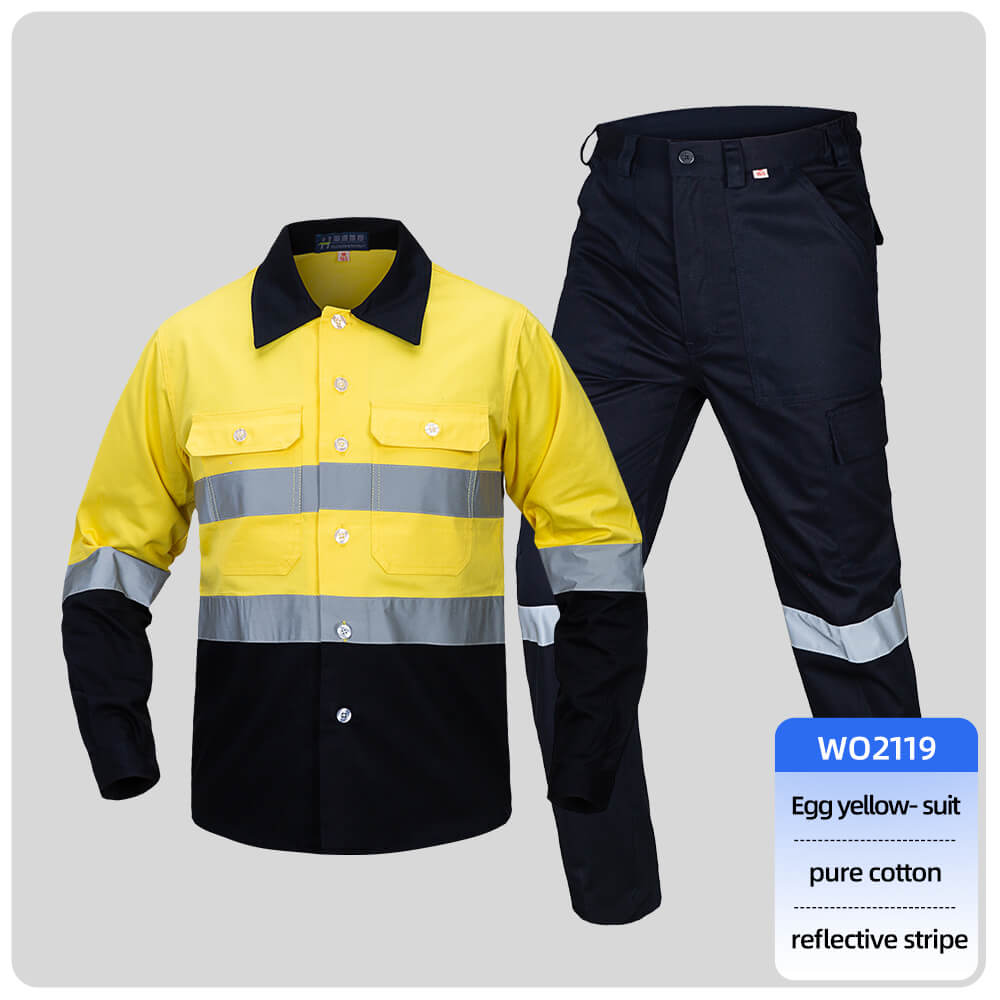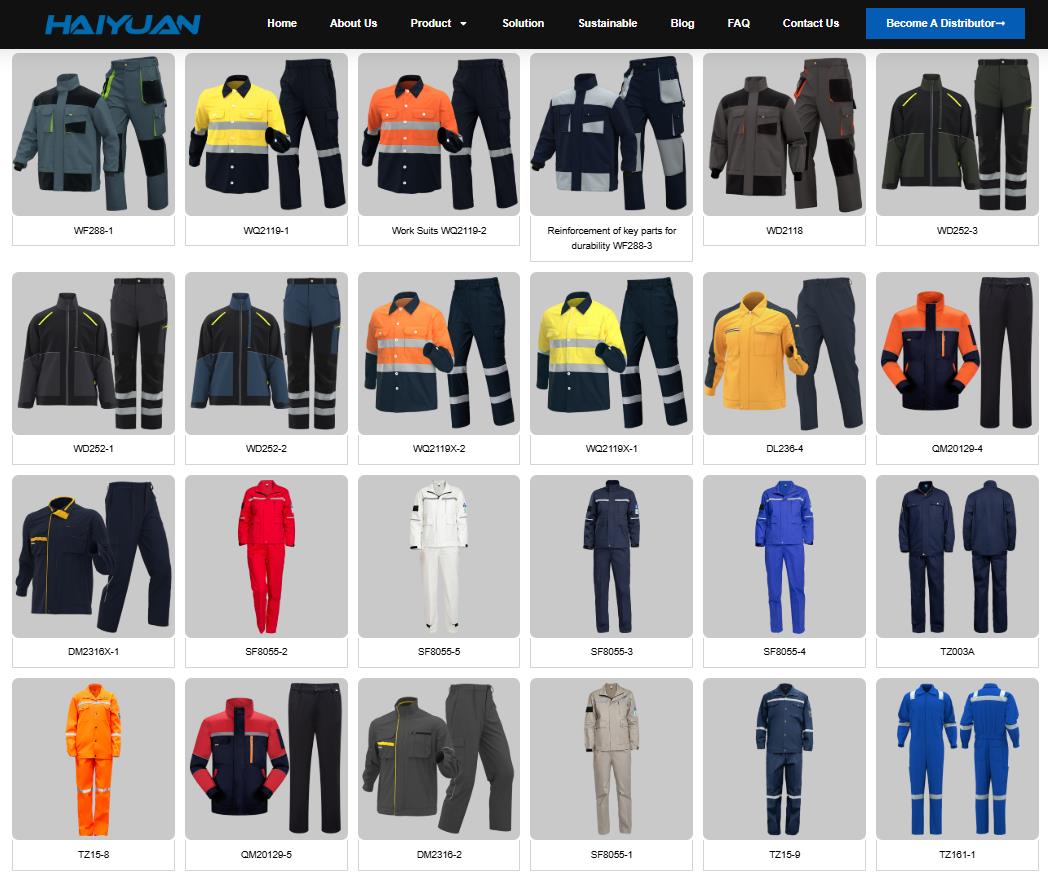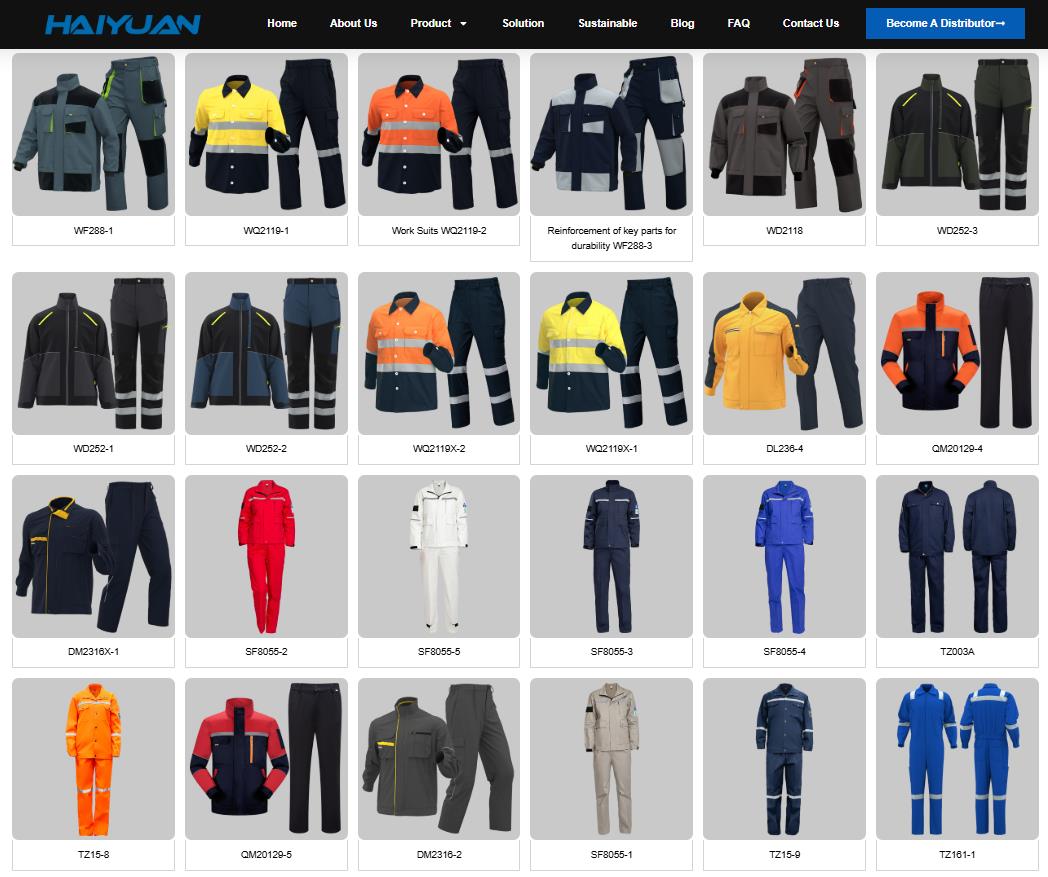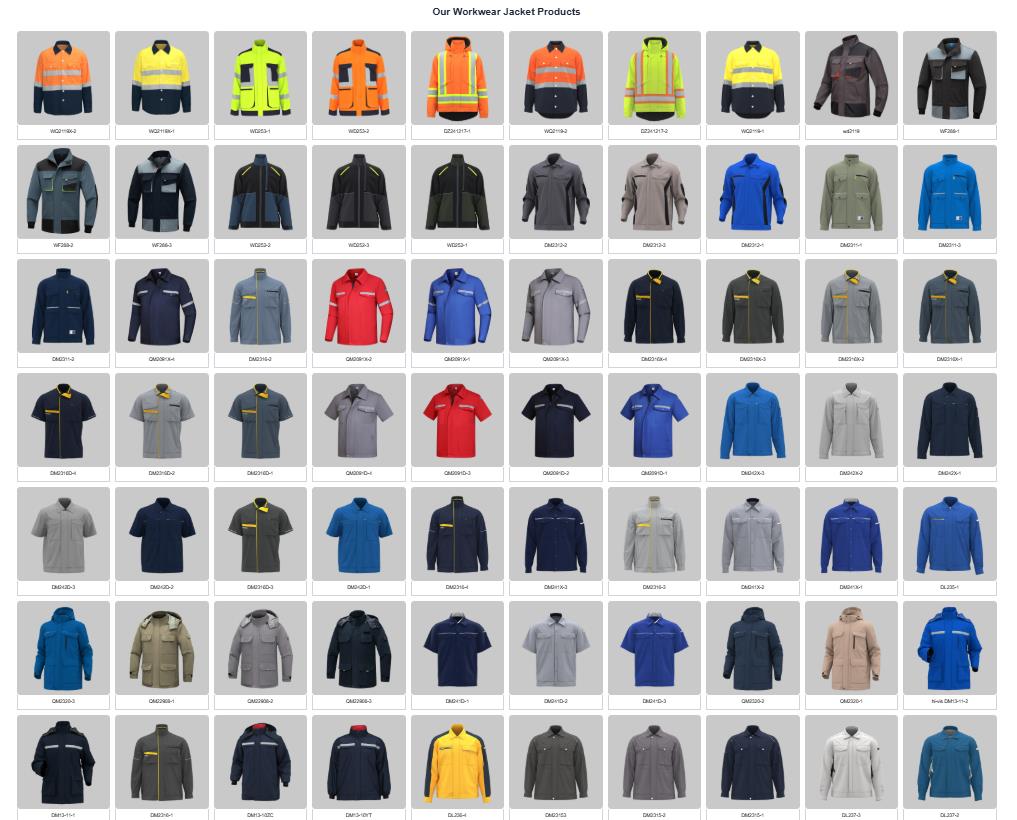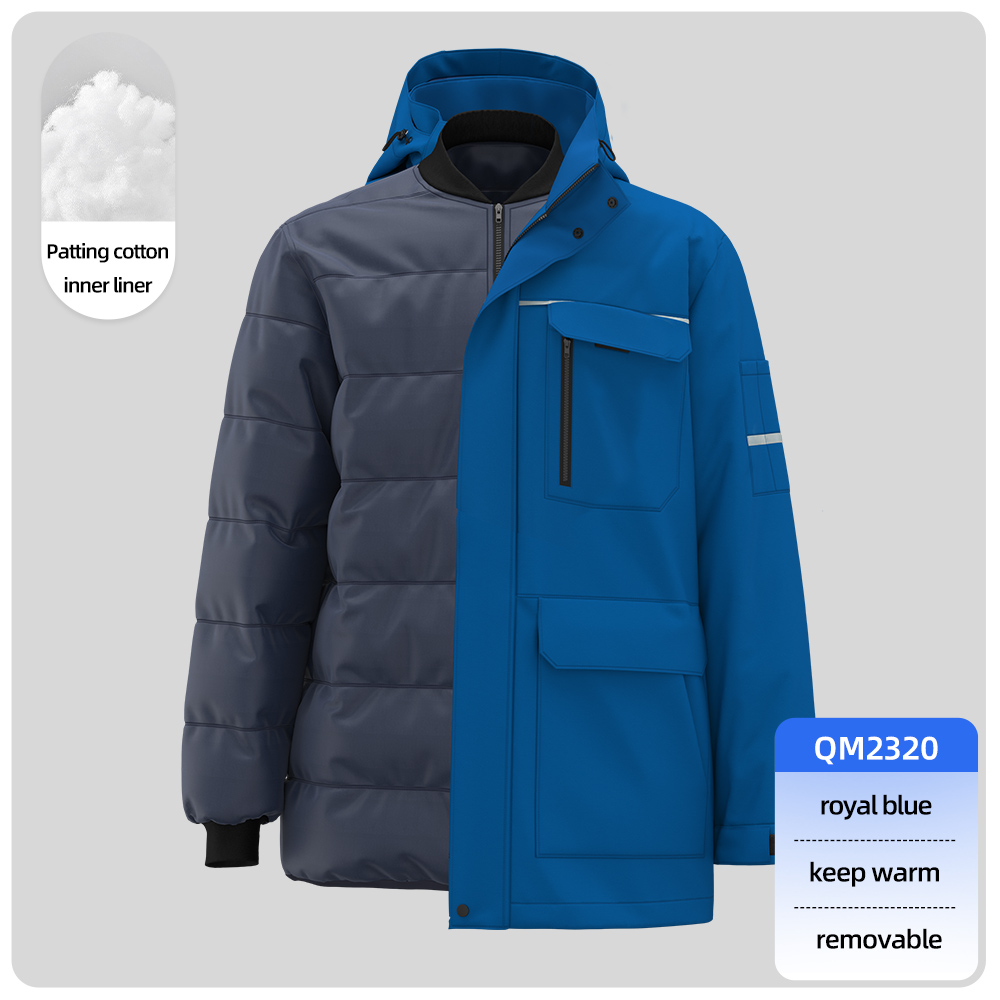Working in a workshop demands clothing that protects against hazards, enhances productivity, and meets safety standards. Below is a comprehensive breakdown of essential workshop attire, specialized gear, and critical safety protocols.
I. Core Workshop Clothing Essentials
1. Work Pants & Overalls
-
Materials:
-
Heavy-duty cotton (10–14 oz), canvas, or ripstop fabric (abrasion-resistant).
-
Specialized: Flame-Resistant (FR) cotton/blends (for welding/grinding).
-
-
Key Features:
-
Reinforced knees (with pad inserts).
-
Tool pockets (hammer loops, multi-tool slots).
-
Gusseted crotch (unrestricted movement).
-
Snug fit (no loose fabric to snag).
-
-
Avoid: Synthetic fabrics (nylon/polyester melts under heat).
2. Work Shirts & Jackets
-
Materials:
-
Cotton or polyester-cotton blends (breathable).
-
Specialized: FR-treated fabrics (ANSI-certified for sparks).
-
-
Key Features:
-
Long sleeves (mandatory for skin protection).
-
Tear-away designs (emergency escape).
-
Mesh ventilation panels (armpits/back for summer).
-
No external buttons/zips (snag hazard).
-
3. Footwear: Safety Boots
-
Non-Negotiables:
-
Steel/composite toe caps (ASTM F2413-rated).
-
Slip/oil-resistant soles (OSHA-compliant).
-
Electrical Hazard (EH) rating (if working near live circuits).
-
-
Added Protection:
-
Metatarsal guards (impact protection).
-
Puncture-resistant midsoles (for sharp debris).
-
4. High-Visibility Gear (Low-Light Areas)
-
ANSI/ISEA 107 Class 2 or 3:
II. Specialized Protection by Hazard
| Hazard Type | Clothing Solution | Key Standards |
|---|---|---|
| Sparks/Flames | FR coveralls (8+ cal/cm² rating) | NFPA 2112, ASTM F1506 |
| Chemical Splashes | Chemical-resistant aprons (PVC/neoprene) | EN ISO 13034 (Type 6) |
| Sharp Debris | Cut-resistant sleeves (Level A5+) | ANSI/ISEA 105 |
| Arc Flash | Arc-rated (AR) hood + balaclava | NFPA 70E |
| Extreme Cold/Heat | Insulated jackets/cooling vests | ISO 11079 (Cold), ISO 9920 (Heat) |
III. Prohibited Clothing & Accessories
-
❌ Loose Items: Untucked shirts, hoodie strings, dangling straps.
-
❌ Shorts/Capris: Exposed skin risks burns/cuts.
-
❌ Synthetic Fabrics: Melts onto skin during fires (e.g., polyester).
-
❌ Jewelry/Watches: Conducts electricity, snags machinery.
-
❌ Open-Toed Shoes: No exceptions.
IV. Advanced Add-Ons & Maintenance
Critical Accessories:
-
Knee pads: For flooring/construction tasks.
-
Tool belts: Keep hands free (avoid hanging near machinery).
-
Aprons: Leather (welding) or rubber (chemicals).
Clothing Maintenance Rules:
-
FR Gear: Wash separately (no fabric softeners—reduces FR efficacy).
-
Inspect Daily: Replace if torn, oil-soaked, or FR coating degraded.
-
Decontaminate: Immediately remove chemical-exposed clothing.
V. Workshop Dress Code Checklist
-
✅ Pants: Snug-fit, reinforced-knee, no cuffs.
-
✅ Shirt: Long-sleeved, fitted cuffs, FR if required.
-
✅ Boots: Steel-toe, non-slip, EH-rated.
-
✅ Visibility Gear: ANSI Class 2/3 vest (if applicable).
-
✅ Hair/Jewelry: Tied back, no rings/watches.
Pro Tip: Always layer clothing! Start with moisture-wicking base layers (100% cotton), add FR/workwear, then specialized PPE (aprons, sleeves).
VI. Global Safety Standards Quick Reference
-
OSHA (USA): 29 CFR 1910.132 (PPE General Requirements).
-
EU: EN ISO 13688 (Protective clothing standards).
-
Canada: CSA Z96 (High-visibility apparel).
-
Australia: AS/NZS 4602 (FR clothing).
Final Rule: Workshop clothing is your first line of defense. Prioritize certified gear over cost, enforce strict dress codes, and train teams on garment limitations. When in doubt, consult OSHA/ISO guidelines or a safety officer. 🔧🛡️
Need help sourcing compliant workwear? Share your workshop’s hazards for tailored recommendations.
Recommended related reading:
Why is it important to wear work clothes?
Which countries have the strictest requirements?
What are the standards for work clothes?
Summer men’s work pants high visibility work pants
Why is it important to wear work clothes?
Which countries have the strictest requirements?
What are the standards for work clothes?
Is your company a real manufacturer?


